Schiphol
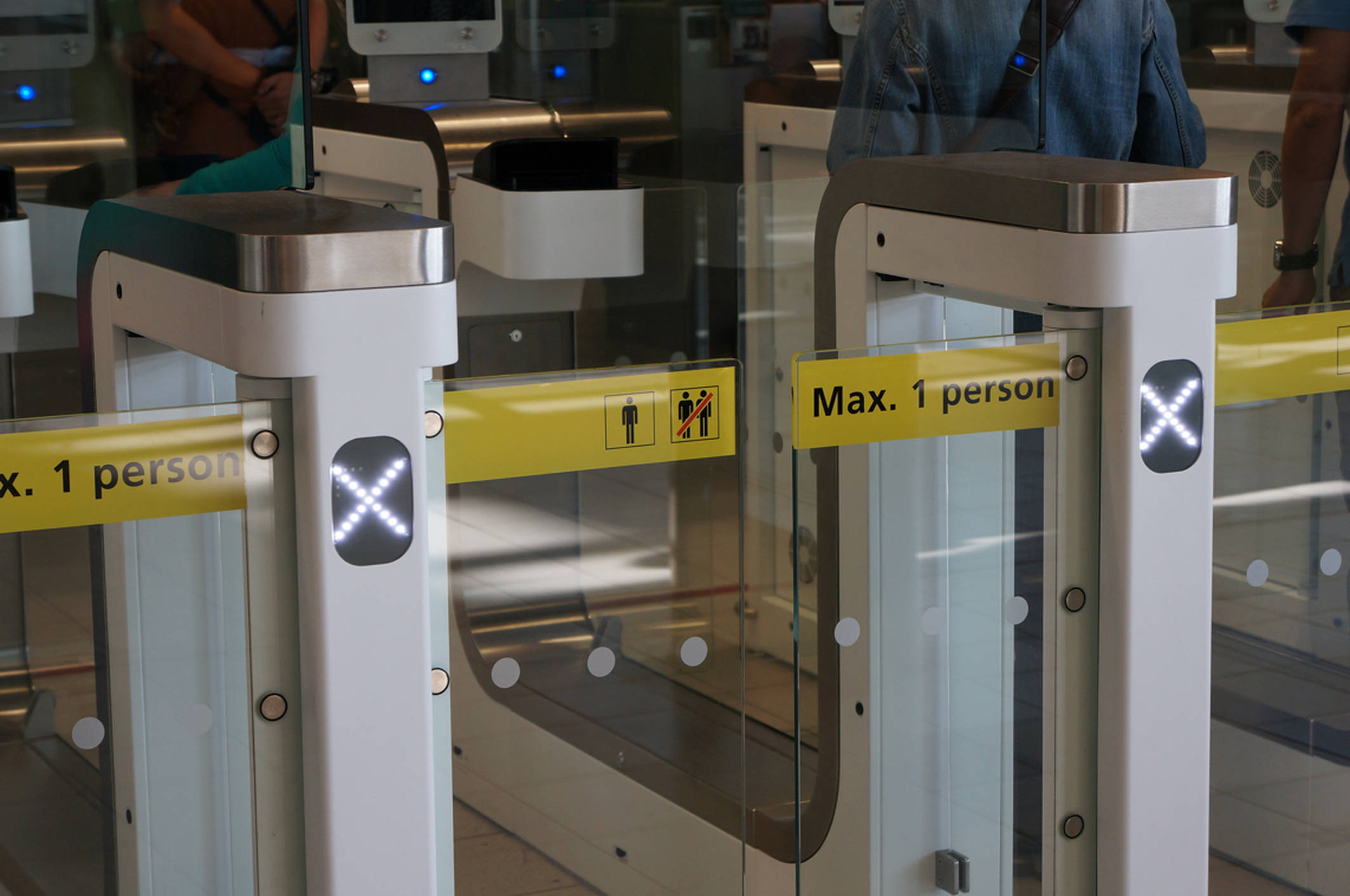
In order to be able to cope with constantly increasing numbers of passengers, Schiphol has been making use of automated border checkpoints. Fabrique was commissioned by the Ministry of Home Affairs and Kingdom Relationships to develop a concept, the spatial layout and the user interface for the new ‘e-gates’.

Self service border control
What’s the best way to cope with the increasing passenger demand at Schiphol? We took a field trip to the location. Turned the strict customs counters 90 degrees and developed automated border passages. E-gates that fit seamlessly into the flow and experience of Schiphol.
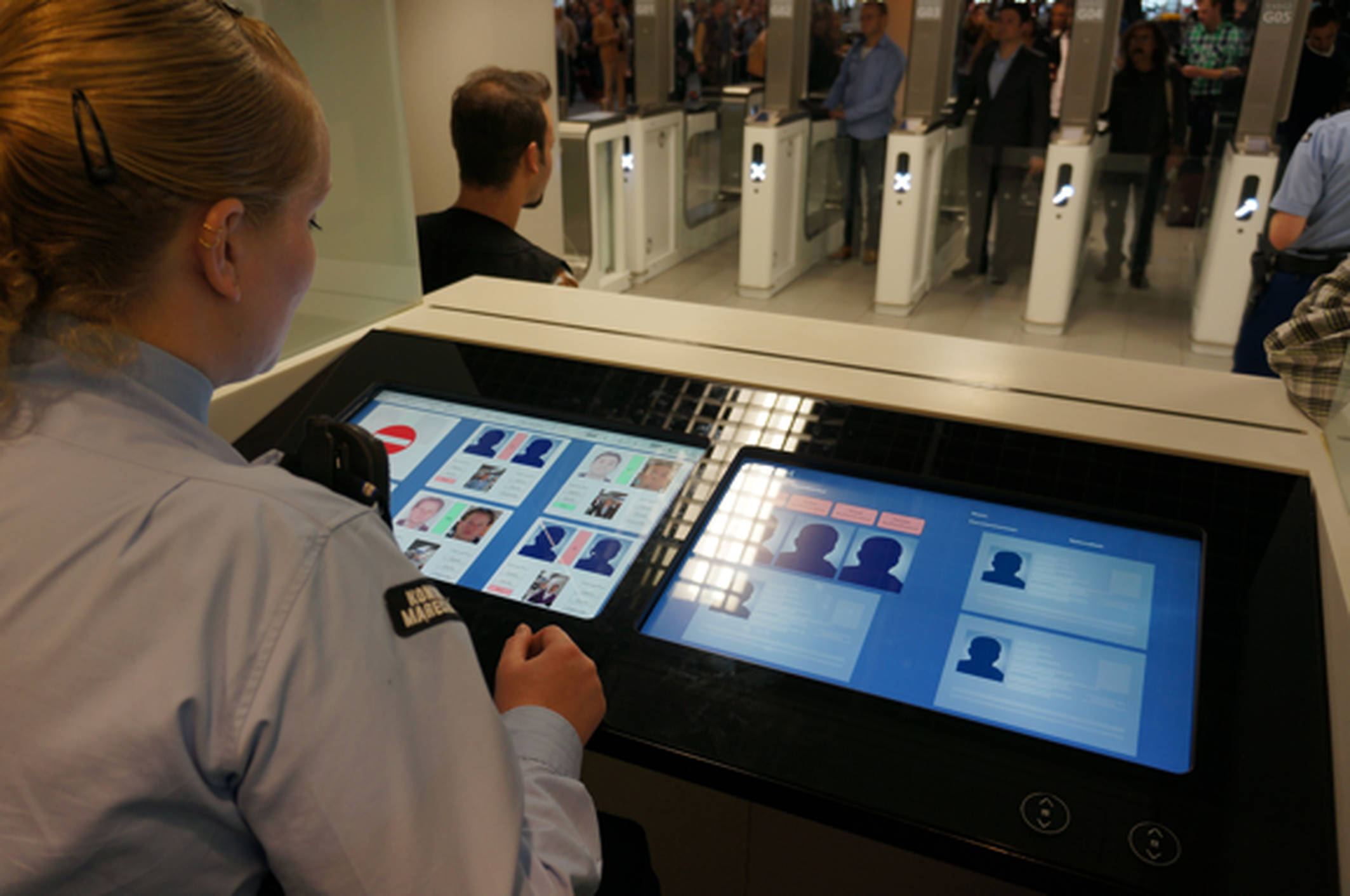
Help travelers move forward
Until 2012 only technology-driven e-gates were available on the market. Robust metal structures with loud, screeching interfaces. Starting with the service design, we developed automated border passages that help you as a traveler move forward, rather than holding you back.
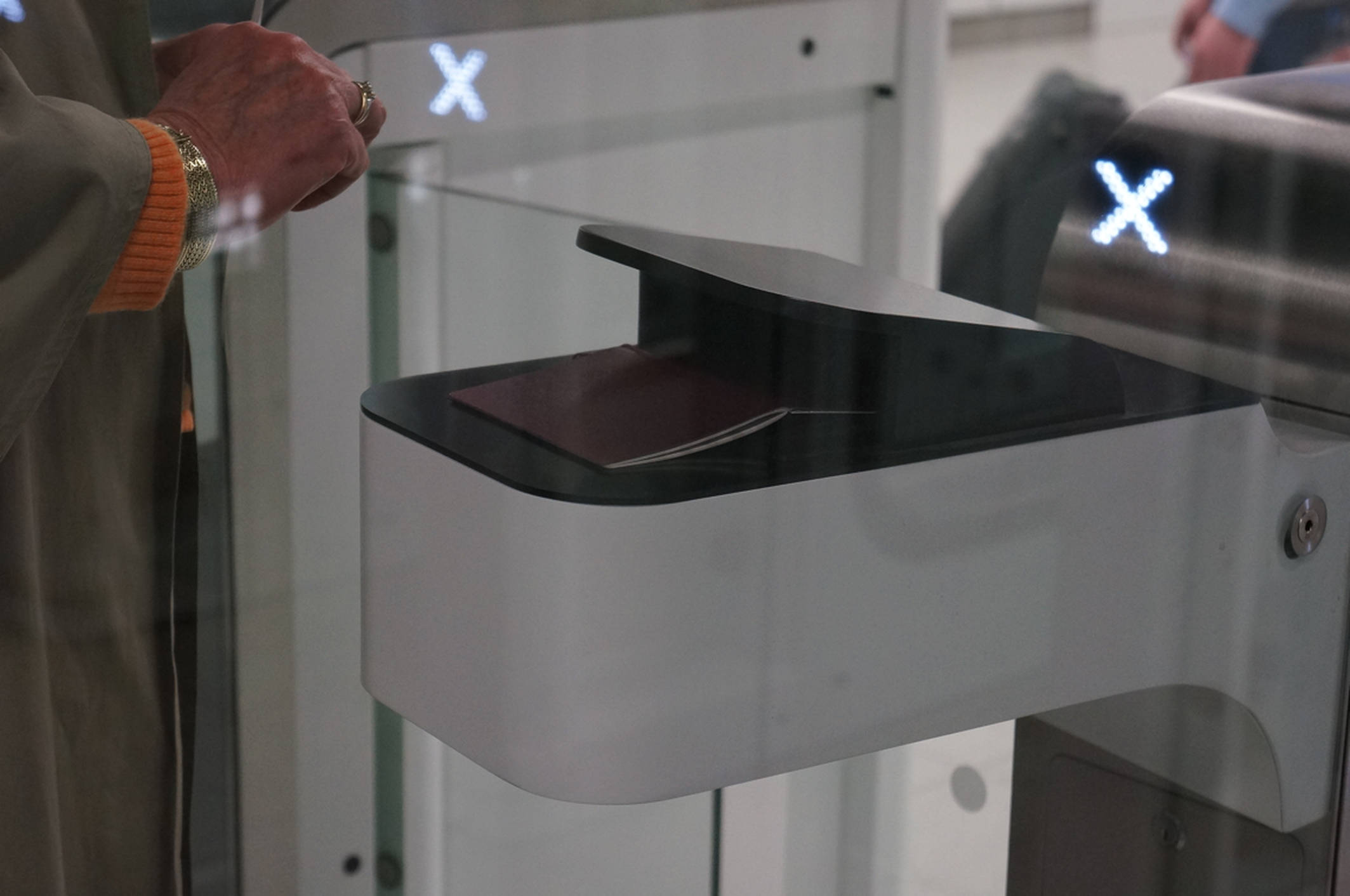
Research in the departure hall
First step: carry out an extensive analysis. On location. How does the traveller approach the crowds? What are the user expectations? Should we reassure users, support them or put them under pressure? How do we ensure a safe but still enjoyable process?
Flow and space at harmony
We built a life-size replica of the e-gate, to check out the dimensions and flow, get a better idea of the whole thing. That’s how we got all the steps -screen instructions, scan camera, passport control and opening and closing of the gates- to come together.
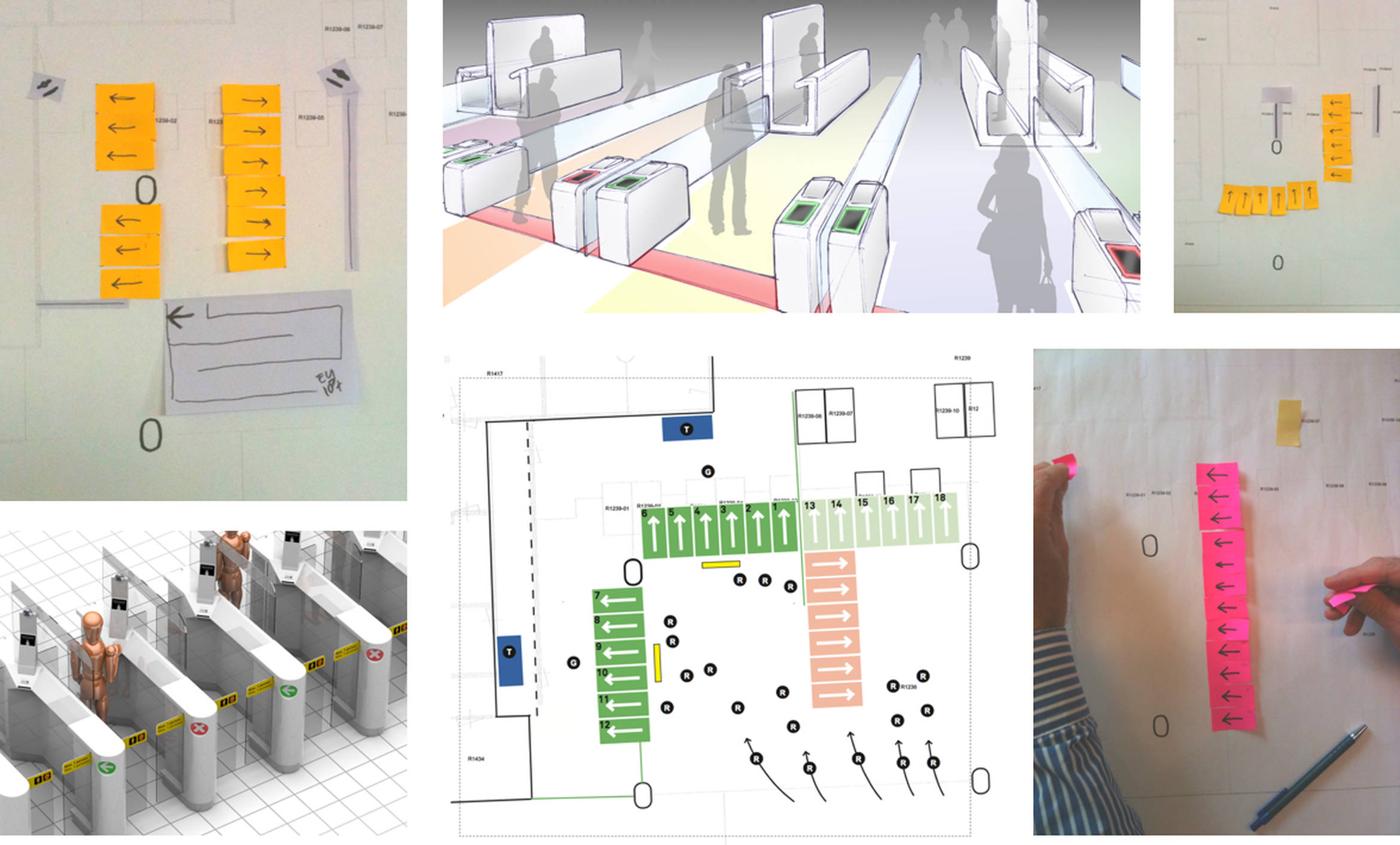
Shape and interactivity guide the traveller. Rounded contours invite you to step into the device. The interface supports you as a traveller. Lit-up lines direct you intuitively through the steps, lets you see which parts need your attention and when.
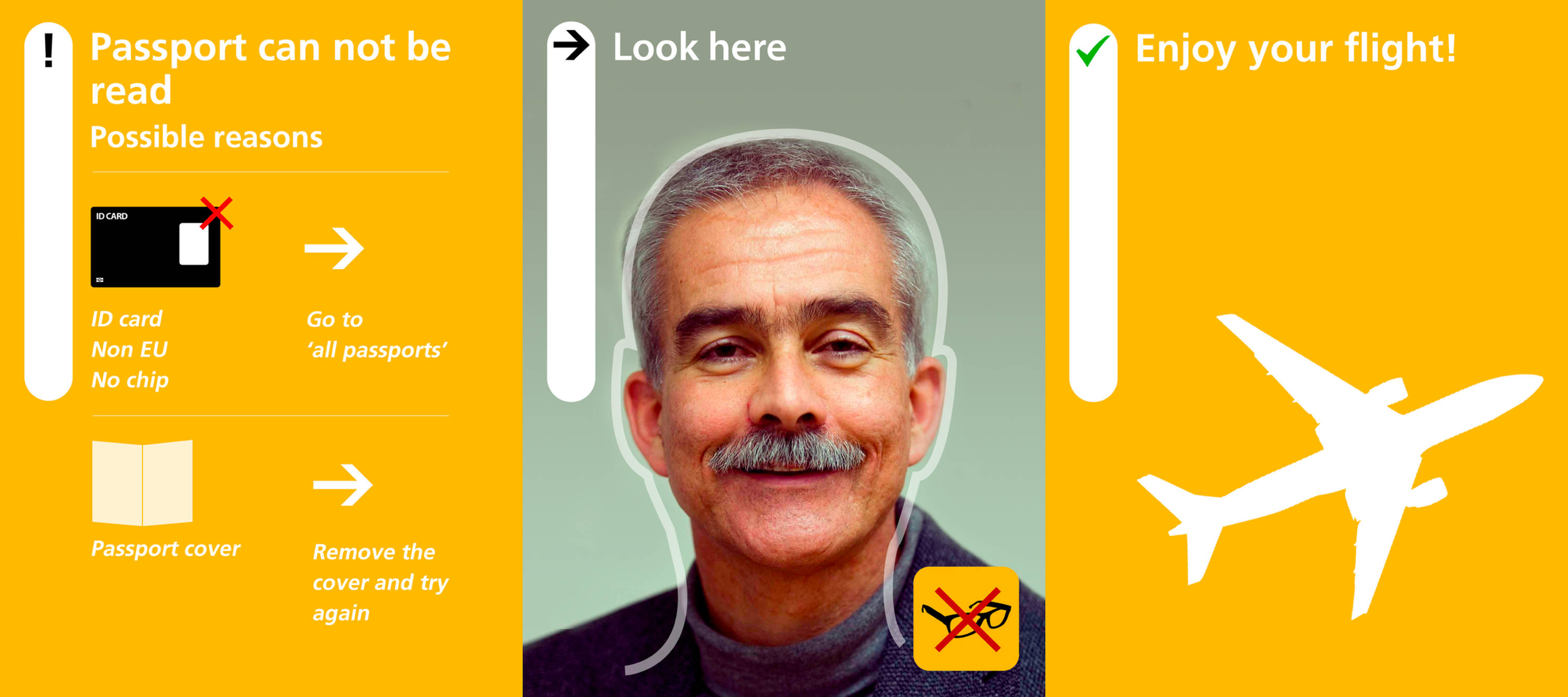
Travellers by the millions
Based on our vision and concept development, technology companies Accenture and Vision-Box were able to develop first versions of the e-gate. November 2012 saw the first 36 new e-gates put to use. In their first half year of use, the 36 e-gates have already helped one million people cross the border.
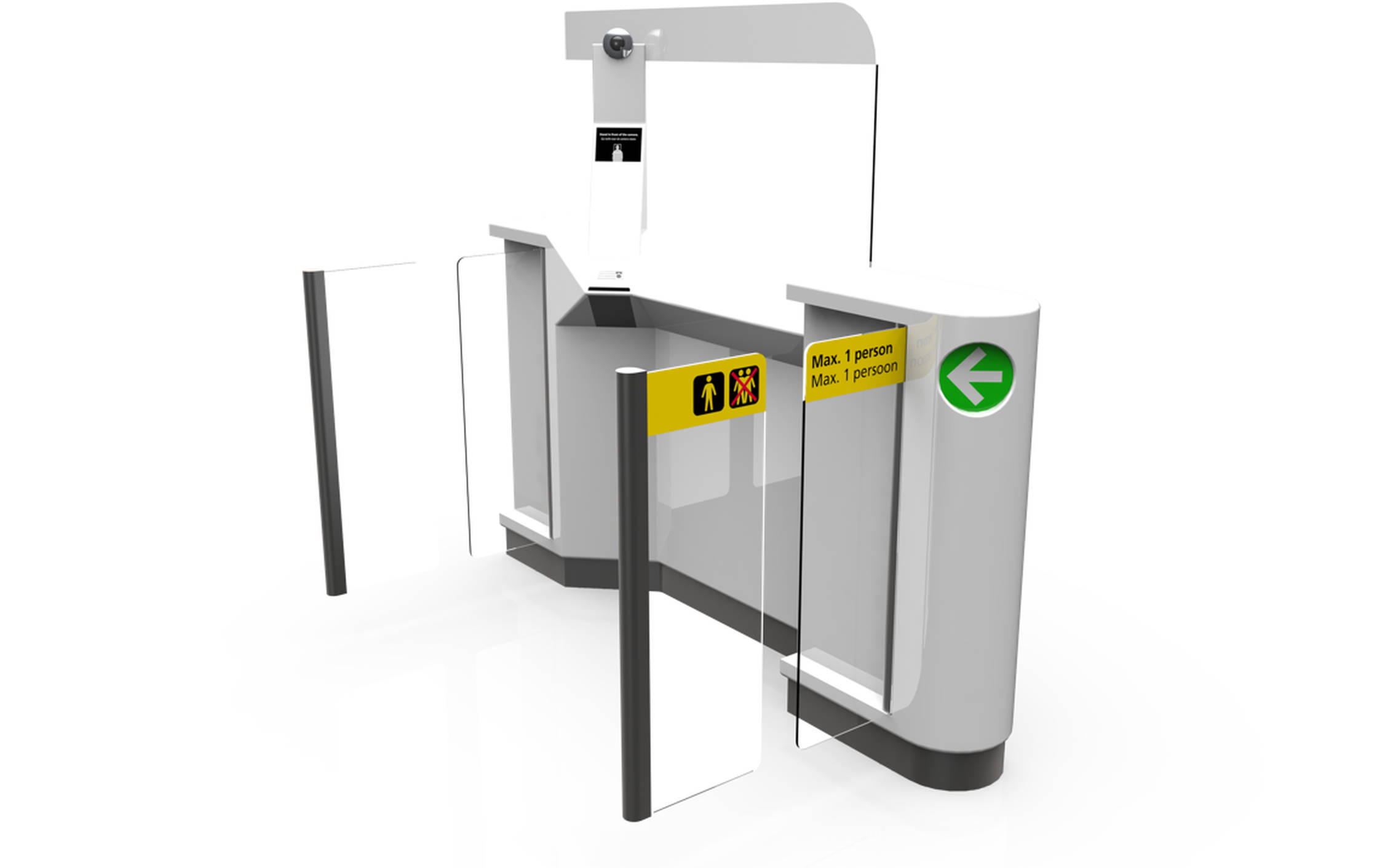
Continuous development
We’ll go on to guide the further implementation of the passages. Continue to measure user experiences, which will serve as input for future passage developments. This way, the traveller remains the prime focus.